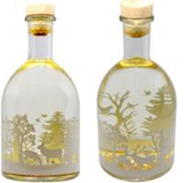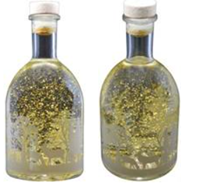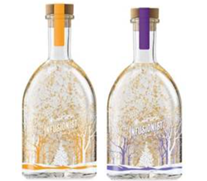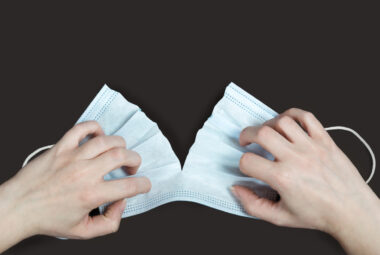
A snowstorm in a gin bottle? M&S IP strategy outmanoeuvres Aldi
As many will already be aware, M&S and Aldi recently called a truce in the viral dispute involving the M&S ‘Colin the Caterpillar’ and Aldi ‘Cuthbert’ cakes. What interested Intellectual Property (IP) attorneys was M&S’s strategy of using copyright to attack Cuthbert: is ‘Colin the Caterpillar’ a work of artistic craftsmanship? Unfortunately, we may now never know as the dispute was settled out of court. But Aldi, instead of being chastened by this encounter, turned its attention to recreating another lookalike M&S product: gin in a snow globe.
Creating iconic product design
Iconic product designs are no accident. It takes an enormous amount of time to sit at the drawing board and develop original, innovative, and high-quality products. No-one understands this better than M&S as it battles with the discount supermarkets for product share.
It is also not unfair to say that Aldi is well known for launching products that take inspiration from existing brands and their products. While brand owners have frequently relied on trade marks in their fight with the discount retailer, other options are available.
Perhaps with the Colin debacle in mind, when M&S created a novel snow globe gin liqueur range in 2019 it looked to Registered Designs for protection.

An attractive design, the bottle features a large base, and a tree background is visible through the transparent bottle. When the gin liqueur bottle is shaken, sparkly gold flakes float around, creating a snow globe effect against the trees.
The updated 2020 design added a light positioned in the dimple of the bottle to provide an illumination effect.

In November 2021, Aldi launched its own version of clementine and blackberry-flavoured ‘Infusionist’ gin liqueurs to its customers.

This featured a similar forest-style backdrop, and the suspended gold flakes when shaken.
Enforcing rights to protect innovation
M&S was clearly not happy, bringing proceedings against Aldi for Registered Design infringement in the Intellectual Property Enterprise Court, (IPEC).
In short the IPEC, in deciding whether a Registered Design has been infringed, will typically use a multifaceted test. One of the most important considerations, in this case, was the degree of freedom that the designer had in developing the gin liqueur bottle designs.
The two witnesses – one from M&S and one from Aldi – agreed that there were two design restraints: the opening of the bottle had to be wide enough to pour in the gin liqueur, and the sides of the bottle had to be relatively straight to enable the graphical elements to be incorporated.
However, Aldi’s witness argued that there were in fact two more design restraints that the court should consider: in order to comply with food and drink regulations, using gold flakes was the only option for creating the snow globe effect, and using more than two colours in designing the gin liqueur bottle would be very expensive. Faced with these constraints, Aldi argued that a designer would inevitably be left with only the M&S design.
Success for M&S
The Court disagreed, considering a designer to have considerable design freedom in developing the gin liqueur bottle designs. Put simply, this means that the Court held the view that hypothetically there were other designs that could have been developed instead.
The IPEC concluded that the M&S Registered Designs were sufficiently different from what had come before, and that there were a number of similarities between the designs and the Aldi product which had a ‘striking’ effect on the informed user: the identical shapes of the respective bottles; the identical shapes of the respective cork stoppers; a similar winter scene with tree silhouettes; the snow globe effect, and the illumination effect.
While the Court did note several differences in the Aldi designs; for example, the cork stoppers having a watch strap label, the ‘Infusionist’ branding, the winter scene being brighter and busier, and no deer is depicted; these were held to be minor and not enough to avoid creating the same overall impression as the M&S Registered Designs on the informed user. The design infringement claim was therefore successful.
What did M&S do differently this time?
It is clear that M&S has learnt its lesson from ‘Colin the Caterpillar’.
This case is a good example of a well-executed strategy for product protection.
M&S filed the Registered Designs as colour photographs, allowing the key elements of the colour and the gold flakes to be emphasised. Often line drawings provide the best protection, but this is an excellent case where colour provided a striking aspect.
Registered Designs are seen by many as a cost-effective and streamlined process, and are excellent at stopping copycats. They also last for up to 25 years, providing renewal fees are paid every five years.
While copyright and unregistered design rights provide a low-cost option, they should be viewed as a backstop solution. They also have a serious drawback – unregistered design rights and copyright only protect against another party copying a design. They don’t protect against another party independently creating the same design. In the case of Registered Designs, there is no uncertainty surrounding this issue as copying is not required to successfully sue someone for infringement.
Barker Brettell has a specialist team of design rights experts that can assist and advise you. To continue the conversation, please contact the author or Neil Kilpatrick, patent and design rights attorney.



